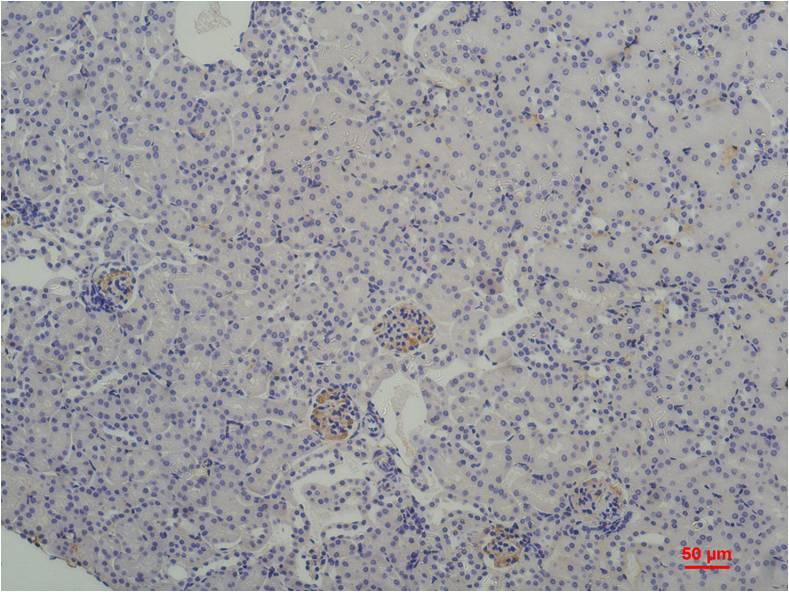
| WB | 咨询技术 | Human,Mouse,Rat |
| IF | 咨询技术 | Human,Mouse,Rat |
| IHC | 1/50-1/100 | Human,Mouse,Rat |
| ICC | 技术咨询 | Human,Mouse,Rat |
| FCM | 咨询技术 | Human,Mouse,Rat |
| Elisa | 咨询技术 | Human,Mouse,Rat |
| Aliases | TBP; GTF2D1; TF2D; TFIID; TATA-box-binding protein; TATA sequence-binding protein; TATA-binding factor; TATA-box factor; Transcription initiation factor TFIID TBP subunit |
| Entrez GeneID | 6908 |
| clone | 5C1 |
| Host/Isotype | Mouse IgG1 |
| Antibody Type | Primary antibody |
| Storage | Store at 4°C short term. Aliquot and store at -20°C long term. Avoid freeze/thaw cycles. |
| Species Reactivity | Human,Mouse,Rat |
| Immunogen | Purified recombinant protein expressed in E.coli. |
| Formulation | Purified antibody in PBS with 0.05% sodium azide,0.5%BSA and 50% glycerol. |
+ +
以下是3篇与TATA Box Binding Protein(TBP)抗体相关的文献概览:
1. **文献名称**: "The TATA-binding protein: a general transcription factor in eukaryotes"
**作者**: Hernandez, N.
**摘要**: 该研究系统分析了TBP蛋白在RNA聚合酶II介导的转录起始中的核心作用,并描述了特异性抗体的开发及其在染色质免疫沉淀(ChIP)和蛋白质定位实验中的应用。
2. **文献名称**: "Mechanisms of transcriptional regulation by RNA polymerase II"
**作者**: Roeder, R.G.
**摘要**: 综述了真核生物转录机制,重点探讨TBP与启动子结合的分子机制,并提及使用TBP抗体阻断体外转录实验以验证其功能的研究案例。
3. **文献名称**: "TFIID recognition of the initiator element in core promoters"
**作者**: Dynlacht, B.D. et al.
**摘要**: 通过免疫共沉淀和Western blotting技术,利用TBP抗体揭示了TFIID复合物在启动子识别中的动态结合模式,强调了抗体在解析转录复合物组成中的关键作用。
4. **文献名称**: "Aberrant TATA-box binding protein expression in human cancers"
**作者**: Nakajima, T. et al.
**摘要**: 使用TBP特异性抗体进行免疫组化分析,发现多种癌症组织中TBP异常表达与基因转录失调的相关性,为癌症诊断提供了潜在标志物。
以上文献均涉及TBP抗体的实验应用(如ChIP、Western blotting、免疫组化),并围绕其功能或疾病关联展开研究。
The TATA box-binding protein (TBP) is a critical component of the transcription factor TFIID, essential for initiating RNA polymerase II-mediated transcription. It binds specifically to the TATA box, a conserved DNA sequence in gene promoters, facilitating the assembly of the pre-initiation complex. TBP also plays roles in transcription by RNA polymerases I and III, highlighting its broad regulatory importance. Structurally, TBP contains a highly conserved C-terminal domain responsible for DNA binding and protein interactions, while the N-terminal region varies across species and may modulate transcriptional activity.
Antibodies targeting TBP are widely used in molecular biology to study transcriptional mechanisms, protein-DNA interactions, and gene regulation. These antibodies enable detection and quantification of TBP in techniques like Western blotting, immunoprecipitation (ChIP), and immunofluorescence. They are crucial for investigating diseases linked to transcriptional dysregulation, including cancers and neurodegenerative disorders. Researchers often validate TBP antibodies using TBP-deficient cell lines or recombinant protein controls to ensure specificity. Cross-reactivity with TBP orthologs (e.g., human vs. mouse) should be confirmed for experimental models. Some antibodies distinguish post-translational modifications or specific isoforms, aiding functional studies. Commercial TBP antibodies are typically raised in rabbits or mice, with clones like 1TBP18 (mouse monoclonal) being frequently cited. Proper controls, such as siRNA-mediated knockdown, are recommended to confirm signal specificity, as non-specific bands may appear due to TBP's low molecular weight (~38 kDa) and abundant binding partners.
×